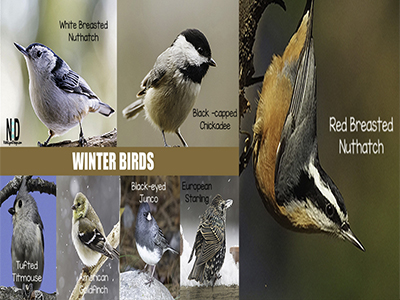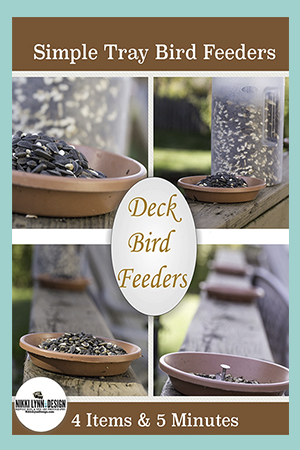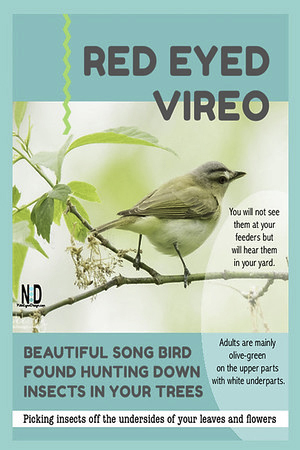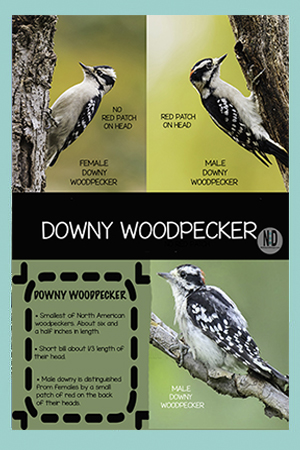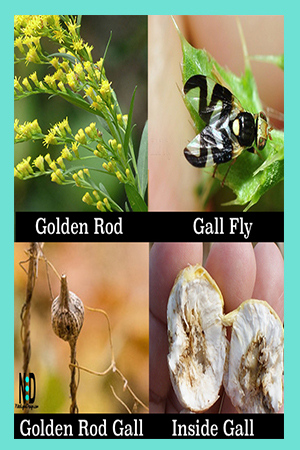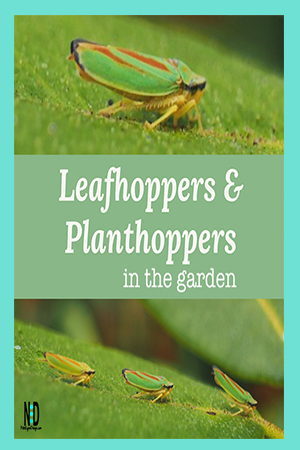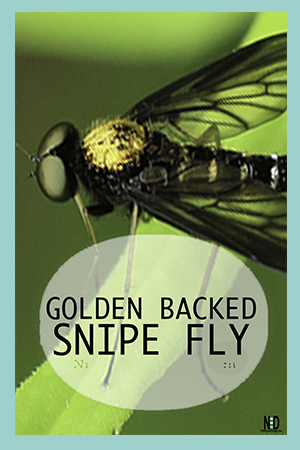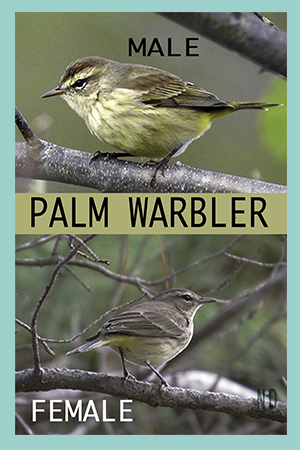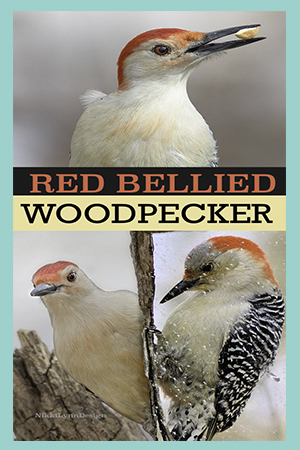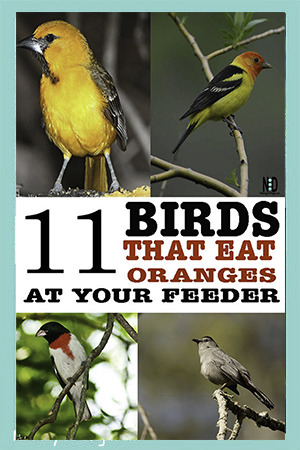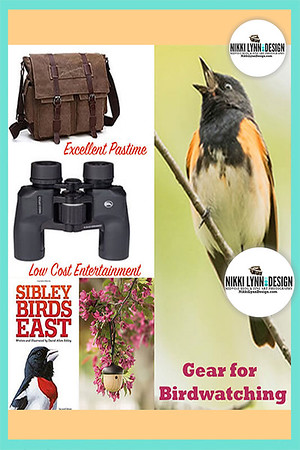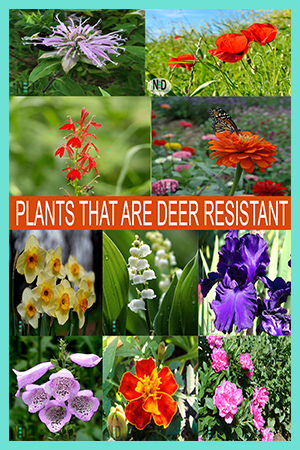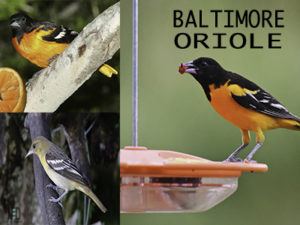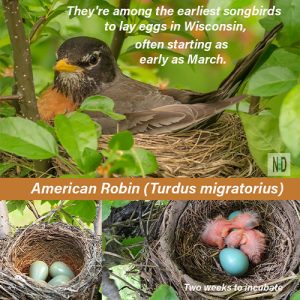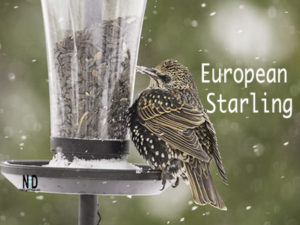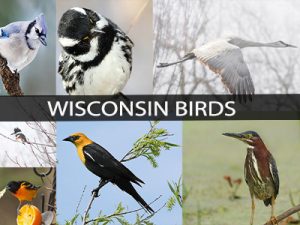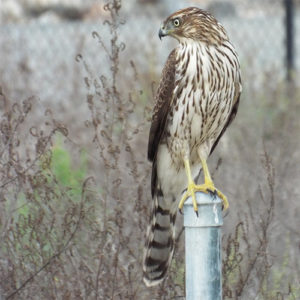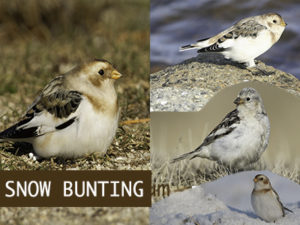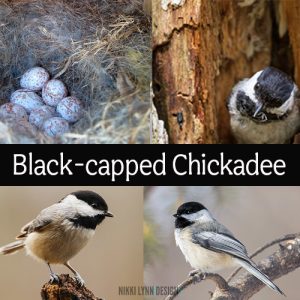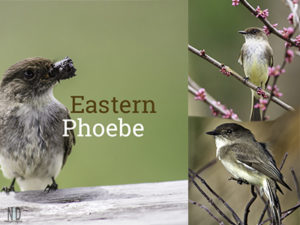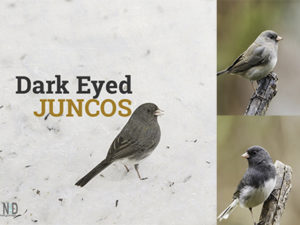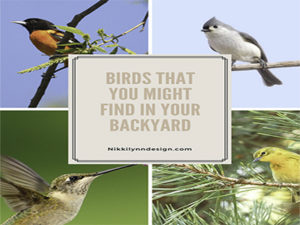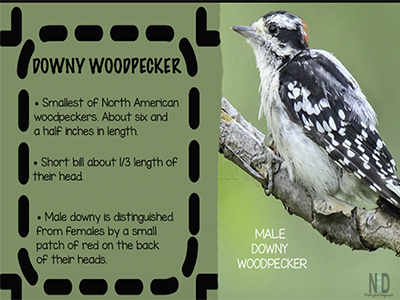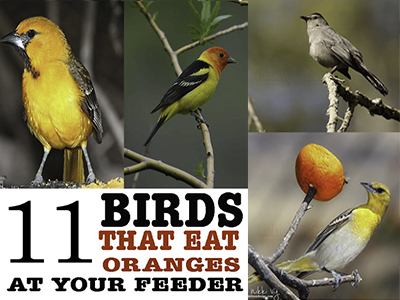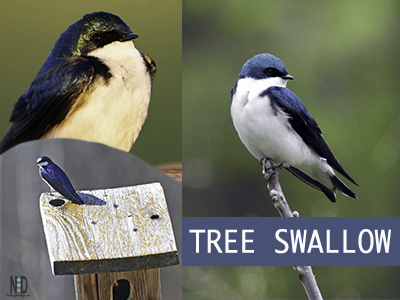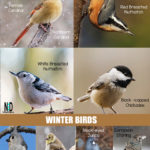Many birds migrate in the fall to warmer climates, but we have a variety of winter birds that stick around and tough out the harsh cold, and some birds even migrate to the Midwest for the cold winter months.
Winter Birds
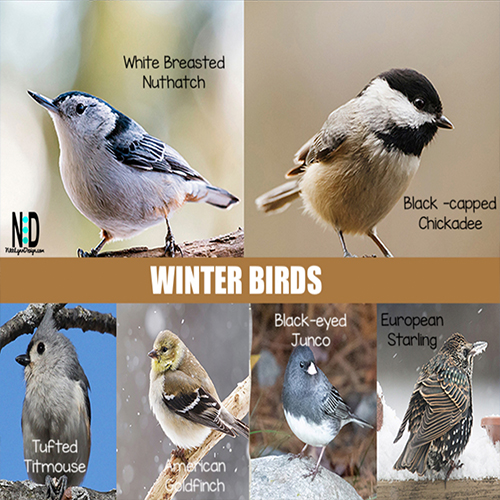
If you are new to birdwatching or feeding the birds one there may be one or more of the feathered friends below may stump when you first see.
The listing below may help you ID the birds hanging around the feeder.
Making Your Yard Winter Friendly
For the winter months, some good choices to stock your feeders are safflower seed, black oil sunflower, various blends, and thistle seed. Then add either purchase bird suet or make suet, suet is important because it helps to regulate a birds body temperature in harsh climates.
To make your backyard the hit of the neighborhood add a heated birdbath and you’ll have plenty of action to watch throughout the winter.
Who Is Who At The Feeder

Northern Cardinal
Almost everyone recognizes the iconic flaming red male cardinal, but it is the female Northern Cardinal that may stump first-time bird enthusiasts.
Cardinals have orangish-red and thick stocky beaks for seed cracking. Both the male and female have a crest of feathers on the top of their heads and long tail feathers.
Additional Post: All About the Northern Cardinal
Males are bright red with a black mask around the eyes and on its throat. Females are pale brown to a warm yellow during the winter months with red tinges in the wings, tail, and crest.
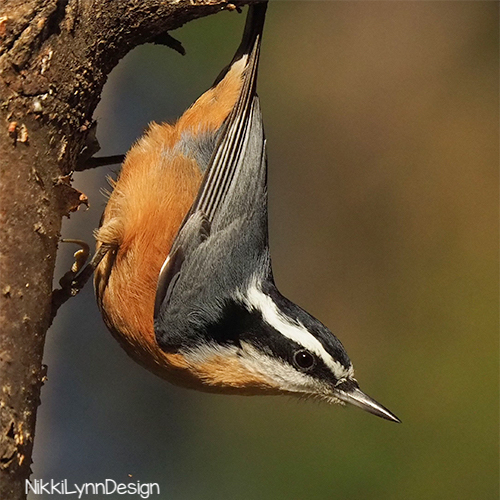
Red-Breasted Nuthatch
Red-breasted nuthatches are around 4-1/2 inches long and are blue-grey colored birds with a black-capped head with white stripes above their eyes.
Their breast is rusty nutmeg color. Females have a tad of a blue hue to the cap on their head. The red-breasted nuthatch is a true winter bird for my area because it only shows up at my feeder during the winter months.
Additional Post: All About The Red-Breasted Nuthatch
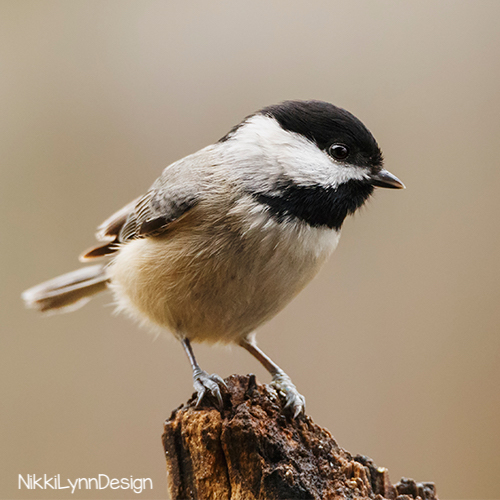
Black-Capped Chickadee
Chickadees are sweet little birds that will come to the feeder throughout the year in some areas.
In other areas, the birds show up at the feeders during the cold winter months. Look for a bird that has a peachy-colored belly and a prominent black and white face.
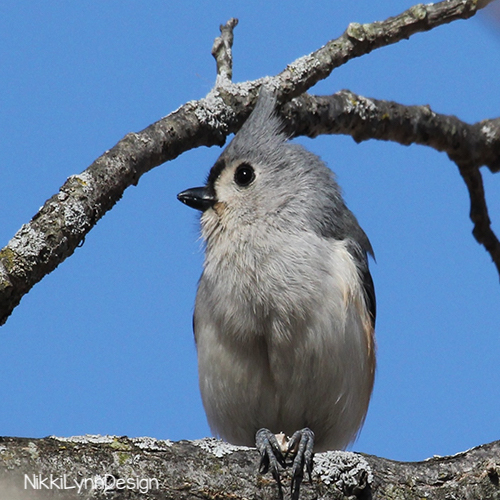
Tufted Titmouse
Titmice are a small bird with a slate gray crown and back. The breast of the bird has a mix of gray and white plumage. The beak of the bird is stubby and glossy black.
I only see tufted titmice at the feeders during the winter months but some bird enthusiasts have reported having them at the feeder year-round.
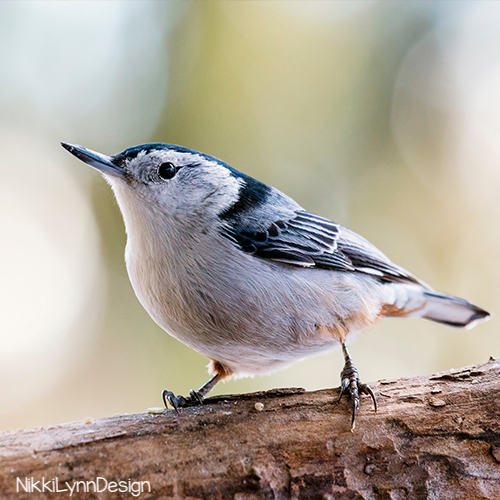
White-Breasted Nuthatch
White-Breasted Nuthatches are white and gray birds with a sometimes almost blue hue its feather and long needle noses. The birds spend much of their time carrying seeds away to stash for later.
Additional Post: White-Breasted Nuthatch
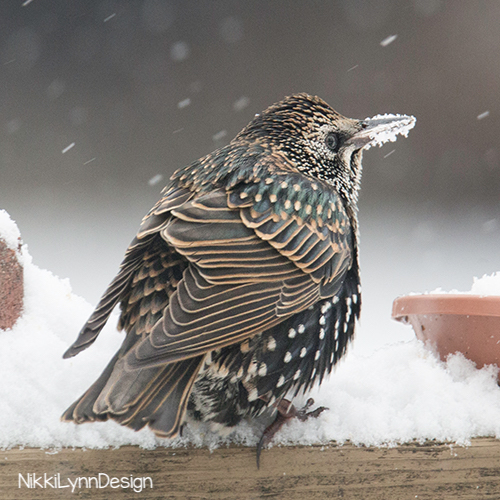
European Starling
I’m not a huge fan of starlings at my feeder because they generally travel in large flocks and will clean out the feeder in minutes.
During the winter months, the birds are a little harder to resist with their bold speckled patterns against the white snow.
Additional Post: European Starling

American Goldfinch
The American Goldfinch’s winter plumage is much different than its striking bright yellow and black summer plumage.
During the winter months, the bird is dull olive-brown with a hint of yellow coloring to its head and a bright white belly.
Additional Post: American Goldfinch
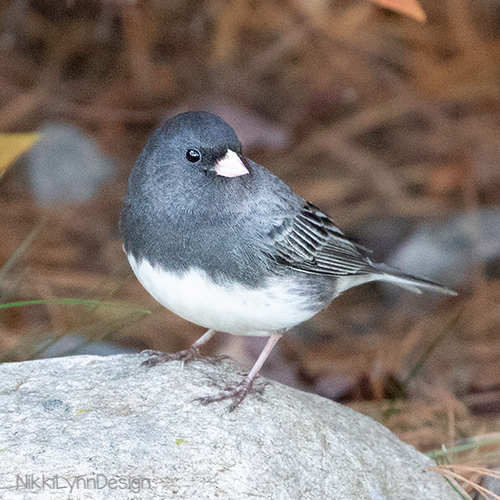
Dark-eyed Junco
Dark-eyed Juncos arrive in the late autumn and stay through spring. The birds are slate gray with a white belly and beak. The wings are black and white.
The birds will come to a feeder on occasion but generally are ground feeders, picking up the seed other birds have dropped.
Additional Post: Dark-eyed Junco
Sharing Is Caring. Pin Me
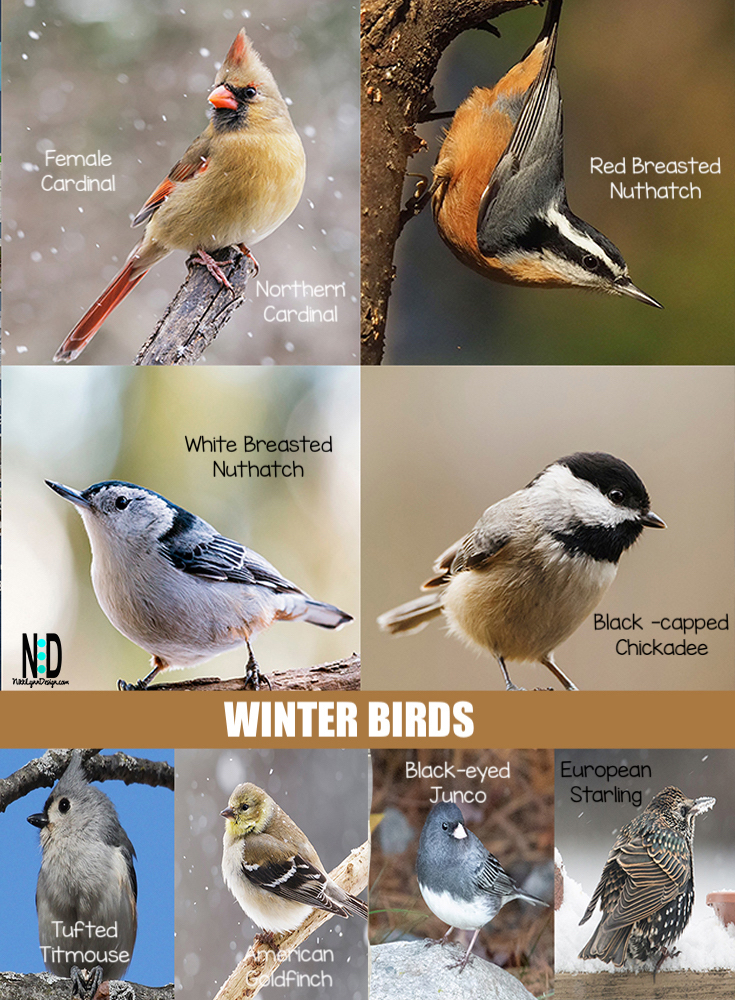
See how many of these winter birds visit your feeder this year. If you are out and about along any body of open water, look for more of our winter migrates of waterfowl. Bufflehead, Common Goldeneye, Bufflehead, Greater Scaup, and Red-breasted Mergansers are common sites. Search the trees, posts, and fields for snowy owls, barred owls, great gray owls, hawks, and eagles. Leaveless trees will make spotting the birds easier. While scanning the farm fields keep a lookout for flocks of Lapland Longspurs and snow bunting,. Happy birding!
Additional Posts
AFFILIATE POLICY: Posts on this site may contain links to outside vendors that pay me a commission when you purchase from them, at no additional cost to you. Thank you for supporting this site!
